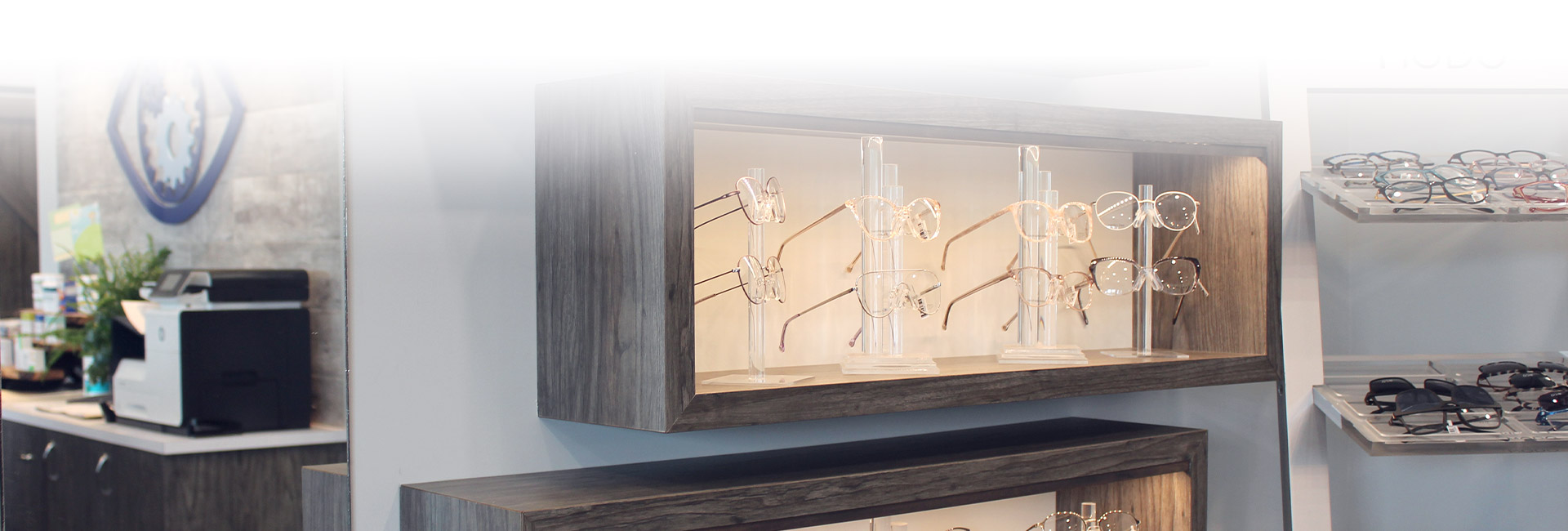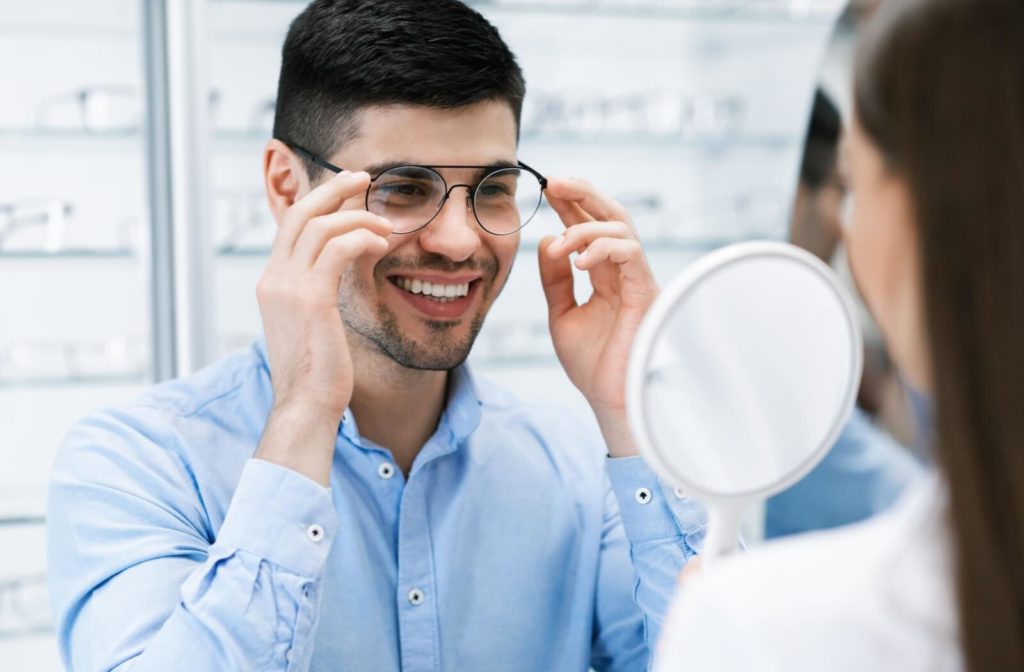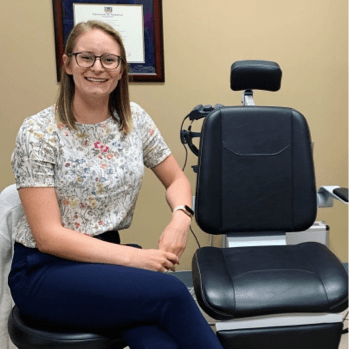We typically tend to think of vision issues as a situation where our eyes aren’t focusing light correctly that we treat that with regular eyeglasses. However, it’s possible to have good visual acuity, but still struggle to see efficiently. It could be a communication breakdown between your eyes and your brain or problems with alignment rather than focus. For children, this can be particularly frustrating. But what can we do?
Prism lenses are used to improve double vision and other binocular vision problems. They are an essential part of vision therapy, which can help train the brain and enhance its connection with your eyes.
Exploring Prism Lenses
In its simplest form, a prism lens is a lens where one edge is thicker than the other. This change in size allows the lens to shift, magnify, or minify our perception of objects, depending on your visual needs.
Traditional eyeglasses are made to refract light and correct refractive errors, such as nearsightedness, farsightedness, or astigmatism. Prism lenses don’t have any focusing power and are instead more concerned with how your eyes are aligned to each other. When your eyes don’t work together, it can cause double vision.
Double vision, also known as diplopia, is a condition where someone perceives 2 images of a single object. This visual impairment can manifest in several ways: the 2 images might appear side by side, one on top of the other, or a mixture of both, causing confusion and discomfort.
Double vision is a common symptom of binocular vision disorders, such as amblyopia and strabismus.
Treating Amblyopia & Strabismus with Prism Lenses
Amblyopia and strabismus are two separate conditions that are often conflated or confused with each other but have different causes. They both affect how your brain and eyes work together to make a picture of your environment.
Amblyopia is a condition where one eye does not see nearly as well as the other, even when wearing glasses. This usually occurs due to abnormal visual development during childhood. The brain will then favour the stronger eye, which can cause vision in the weaker eye to get worse.
Strabismus is a condition in which one eye is not pointed in the same direction as the other (eye turn). A strabismus can occur constantly or intermittently. It can also alternate between both eyes, meaning that either eye can turn at a given time. Strabismus is not a physical issue in the muscle, but rather the brain’s visual system struggling to use both eyes together in an efficient manner.
These are common eye conditions many people experience. If left untreated, they can have massive repercussions on their eye health and lead to worsening vision. It’s much easier to treat these conditions while children are young and their visual system is still developing. But it is possible to make improvements in the visual system at any age.
Prism lenses slightly move where an object appears to be, helping your brain bring those split images into a single complete image. This can help you see clearly while wearing the prism lenses but they won’t permanently fix any misalignment, so they’re typically only one part of the recommended treatment. A vision therapy program may be recommended to promote the brain’s ability to use the eyes together.
Prism Lenses & Vision Therapy
Vision therapy is a highly individualized, supervised, and non-surgical treatment program designed to strengthen the connection between your brain and your eyes.
Vision therapy utilizes a range of tools to retrain or enhance the brain’s ability to control eye coordination and visual processing. Through a strategically structured program, patients undertake activities that improve eye alignment, focusing, and teaming skills—as well as the eye movements that guide them.
Prism lenses can’t solve every problem vision therapy is trying to address, but they’re a significant tool in helping the visual system.
Who Are Prism Lenses For?
Eye misalignment can be the cause—or the result—of many discomforts. For example, balance is a complex mechanism that relies on multiple systems in the body, including the eyes.
When there’s a discrepancy in how we see the world, it can throw off our balance. Prism lenses help by slightly altering the visual spatial perception, which can correct misalignments contributing to balance issues. Similarly, dizziness is a common problem that we could address by adjusting how light enters the eye with prisms.
The introduction of prism lenses in glasses and/or into a vision therapy regimen can yield benefits for people with vision problems caused by:
- Binocular vision dysfunction
- Strabismus
- Myasthenia gravis
- Graves’ disease
- Convergence insufficiency
- Strokes
- Head/brain injuries
Your optometrist may have you test out prism lenses by sticking temporary Fresnel prisms to your glasses. These are much more visible than actual prism lenses are but can help determine if prisms are going to be an appropriate treatment.
Prism Lenses for Brain Injury Recovery
A space where prism lenses can truly shine is in supporting those with concussions and other traumatic brain injuries (TBI).
Recovering from a brain injury can involve retraining the brain and body to work together again. Visual disturbances are common during the healing process, affecting balance and spatial orientation.
By correcting the alignment of visual information, prism lenses can help alleviate some of the challenges faced during recovery, making it easier for people to navigate their surroundings and participate in rehabilitation activities.
Do Prism Lenses Have Side Effects?
Just like any new pair of glasses, it can take some time to grow accustomed to prisms. Rare short term side effects can include:
- Headaches
- Nausea
- Eye pain
- Double vision
These could indicate that your prescription needs to be fine tuned to your needs. If that’s the case, contact your optometrist immediately.

Prism Lenses in the Journey to Clarity
Whether you’re considering vision therapy for your child or exploring your own treatment options, Beyond 20/20 Optometry is here to help. We can guide you through the process and determine if vision therapy can help you achieve clear and comfortable vision.
If you’re concerned about your child’s vision, there’s no time to waste. Book your appointment and let’s get started today.




